Dr M.V.Kirtane has performed more than 2000 cochlear implant surgeries. Given below are the details about cochlear implants.
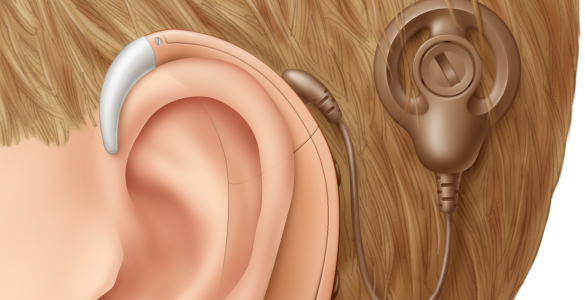
What is a cochlear implant?
A cochlear implant is not a “sophisticated hearing aid”. It functions in a manner completely different from a hearing aid.
In a normal person, the sound waves reach the ear drum which is set into vibration. These sound waves are transmitted further through a chain of 3 bones in the middle ear to the inner ear or the cochlea. The ‘hair cells’ in the cochlea receive these sound impulses and convert them into electrical signals, which are then transferred onwards to the auditory nerve to be carried to the brain for interpretation.
If the cochlea and its hair cells are slightly damaged, the hair cells need more sound energy to produce adequate electrical signal. This is done by using a hearing aid which amplifies the sound. If the cochlear hair cells are so badly damaged that the loudest sound is not enough to generate adequate electrical potential needed for sound perception, a hearing aid fails to give adequate benefit. This is when the person needs a cochlear implant.
A cochlear implant is an electronic device used to enable sound perception and discrimination in patients who are profoundly deaf, and who do not have any benefit from hearing aids. A cochlear implant bypasses the damaged part of the inner ear and delivers electrical signals to the ganglion cells close to the auditory nerve. The auditory nerve relays these signals to the brain, and sound is perceived.Hearing through a cochlear implant is different from normal hearing and takes time to learn or relearn. The implant does not restore hearing or cure a hearing loss. However, it allows patients to understand sounds in the environment, and enjoy a conversation in person or by telephone.
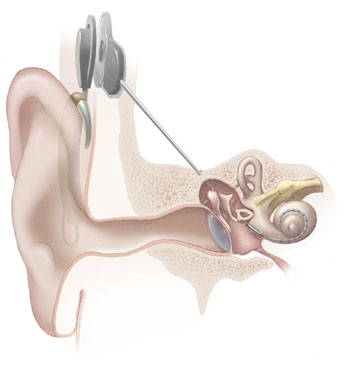
What are the parts of a cochlear implant?
The device has an external component( a microphone, a speech processor and a transmitting coil), which sits behind the ear; and an internal component (the receiver-stimulator and the electrode array), which is surgically implanted under the scalp behind the ear. Both parts work together to allow the user to perceive sound.
The external component consists of:
- A microphone which picks up sounds from the environment and sends them to the speech processor.
- A speech processor, which selects and arranges sounds picked up by the microphone, may be housed with the microphone behind the ear, or it may be a small box-like unit in the patient’s pocket. The speech processor is like a small computer which does the work of the cochlea outside the body i.e. it converts the incoming sound vibrations into an electrical signal just like the cochlea would have done.
- A ring like transmitter sends the processed electrical signals to the implanted receiver.
The internal component consists of:
- The receiver-stimulator which is secured on the bone beneath the scalp. It converts the information received from the external component and sends it along the electrode array.
- The electrode array is surgically inserted within the cochlea to coil around the auditory nerve. The electrodes stimulate the auditory nerve via the spiral ganglion cells.
Who should get a cochlear implant?
Candidacy depends on a number of factors which are collectively taken into account by the cochlear implant team. Age of the patient, onset of hearing loss, hearing history, cause of hearing loss, degree of residual hearing, etc. , play an important role in determining candidacy.
Congenitally deaf children are good candidates and the younger the age at which a child is implanted, the better are the results. Such a child who has not developed any speech and language is called a pre-lingually deaf child. Nowadays, even children under 1 yr are being successfully implanted at our centre.
It is generally agreed, that the a post-lingually deaf adult (one who has lost his hearing after speech and language development) will get very good outcome with a cochlear implant.
The candidacy criteria are:
- bilateral severe to profound hearing loss
- insufficient benefit with optimally fitted hearing aids
- no other coexistent medical illness precluding surgery
- strong motivation to be part of the hearing world and willingness to undergo rigorous post implant rehabilitation
Family support and active participation of the parents in the post implant rehabilitation of the child are prerequisites.
Where can I go to get a cochlear implant?
We run a special clinic for hearing impaired children at the Hinduja Hospital every week on Tuesdays between 2-4pm. Our expert team of ENT surgeons, Audiologists and Therapists evaluate each patient regarding candidacy and guide them through the pre implantation procedures.
All necessary investigations such as OAE, BERA, ASSR, radiological investigations (CT scans and MRI) etc. are done by a panel of clinicians with special experience and expertise in the field of cochlear implants. Our in house paediatrician evaluates each patient thoroughly for other comorbidities prior to surgery.
How is the surgery done?
The procedure is done under general anaesthesia. An incision is taken at the back of the ear to be implanted. The internal component of the implant is secured on the bone under the scalp. The electrode array is inserted inside the cochlea by drilling a small opening into the cochlea.
The patient is discharged within 24 hours after the surgery. Two to three weeks after surgery, switch on of the implant and mapping is performed.
What is mapping?
Programming of the speech processor of the cochlear implant is commonly called “Mapping”. The first mapping session is called “switch-on”.
It refers to the setting of the electrical stimulation necessary for the cochlear implantee to “hear” very soft (just audible) and comfortably loud sound. These stimulation levels correspond to measurements known as Threshold (T), which is the minimum sound stimulus perceived by the patient, and Comfort (C or M) Levels, which is the current level where the user perceives a “comfortably loud” sound.
Mapping is generally done only by a trained audiologist who has special expertise in the field of cochlear implants.
The cochlear implant device can process only a limited range of sounds as compared to our normal range of hearing . Thus it needs to compress the natural range of sounds into a small band.
During the mapping process, the “T” and “C” levels of each individual electrode of the cochlear implant’s internal electrode array are adjusted so that the user can hear the wide range of sounds that he may be exposed to.
Each “map” is individual to its user and changes over time. Maps may become weak, soft, or less clear as tissue grows around the electrode array, or if the user “adapts” to the map. This may result in sound becoming less clear or not being heard as a loud enough signal. Therefore regular visits to the audiologists for repeated mapping sessions are an integral part of the post implant rehabilitation.
Who takes care of the post implant rehabilitation?
Success of the cochlear implant, depends upon the efficacy of the pre as well as post implant therapy. The post implant therapy is generally carried out by a trained auditory verbal therapist. AVT (Auditory Verbal Therapy) is a specialised form of therapy wherein the implantee is trained to understand sounds, intonations and to develop speech and language that will allow him/her to use audition as a primary mode of communication which is similar to a normal hearing person.
More rigorous therapy is needed with prelingually deaf patients, especially older children. Active participation of the patient and their family is required in this process. Parents are often given instructions as to how they can train the child better in their home environment, and we have noted that with active parent participation, the child performs better. For the sake of convenience it is advisable that the patients go back to their primary referring audiologists and speech therapists for post surgery AVT. Patients from far away cities thus don’t have to stay in Mumbai for prolonged periods. Guidance regarding centres available near your city can also be provided by us if needed.
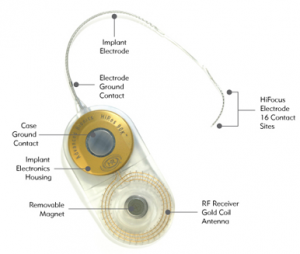
Cochlear implant (Internal component)
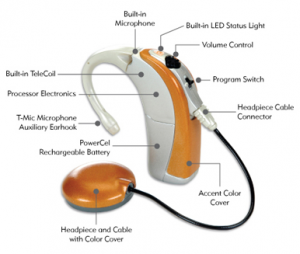
Cochlear implant (External component – ear level processor)
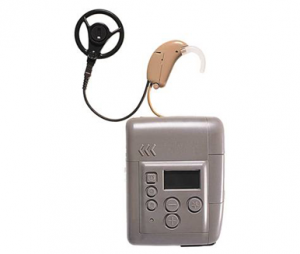
Cochlear implant (External component – body worn processor)

Cochlear Implant